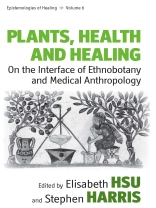Plants have cultural histories, as their applications change over time and with place. Some plant species have affected human cultures in profound ways, such as the stimulants tea and coffee from the Old World, or coca and quinine from South America. Even though medicinal plants have always attracted considerable attention, there is surprisingly little research on the interface of ethnobotany and medical anthropology. This volume, which brings together (ethno-)botanists, medical anthropologists and a clinician, makes an important contribution towards filling this gap. It emphasises that plant knowledge arises situationally as an intrinsic part of social relationships, that herbs need to be enticed if not seduced by the healers who work with them, that herbal remedies are cultural artefacts, and that bioprospecting and medicinal plant discovery can be viewed as the epitome of a long history of borrowing, stealing and exchanging plants.
İçerik tablosu
List of Illustrations
List of Tables
List of Contributors
Introduction
Elisabeth Hsu
History
Editorial introduction
Stephen Harris
Chapter 1. Non-native plants and their medicinal uses
Stephen Harris
Chapter 2. Qinghao .. (Herba Artemisiae annuae) in the Chinese materia medica
Elisabeth Hsu (in consultation with Frederic Obringer)
Anthropology
Editorial introduction
Stephen Harris
Chapter 3. Shamanic plants and gender in the Peruvian Upper Amazon
Francoise Barbira Freedman
Chapter 4. Persons, plants and relations: treating childhood illness in a western Kenyan village
P. Wenzel Geissler and Ruth J. Prince
Plant Portraits
Editorial introduction
Stephen Harris
Chapter 5. East goes West. Ginkgo biloba and dementia
Sir John Grimley Evans
Chapter 6. Medicinal, stimulant and ritual plant use: an ethnobotany of caffeine-containing plants
Caroline S. Weckerle, Verena Timbul and Philip Blumenshine
Index
Yazar hakkında
Stephen Harris was awarded a Ph.D. in plant systematics from the University of St. Andrews in 1990. He has been the Druce Curator of Oxford University Herbaria since 1995 and has published over 50 peer-reviewed papers on genetics and systematics associated with the evolutionary consequences of plant-human interactions.












